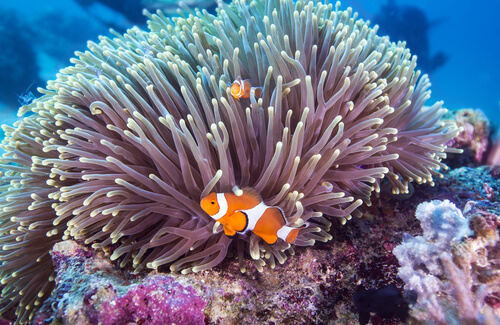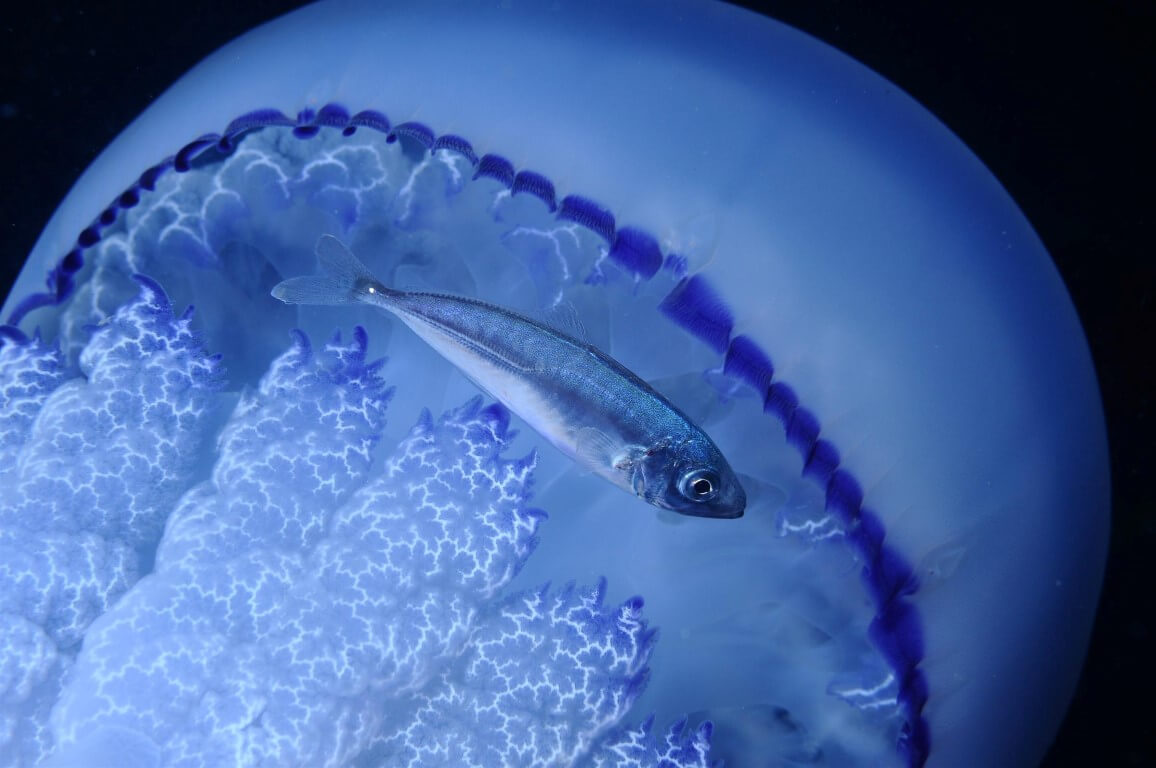In nature there are commensal animals that, in some way, have managed to live in harmony with hosts that for other living beings are scary. This commensalism refers to a form of biological interaction in which one of the participants obtains a benefit, while the other is neither harmed nor benefited.
Below we will tell you everything you need to know about this topic and other curious facts.
Dinosaur animals from a fearsome host
Animals as feared as ocean sharks may have as companions certain fish that feed on their parasites. This becomes an example of commensal animals of a terrible host.
The case of the warrior fish
Source: Wetpixel.com
The famous warrior fish –Nomeus gronovii– is known for his fondness for seek refuge among the poisonous tentacles of the Portuguese caravel, multicolored jellyfish whose stinging cells inoculate a toxic as powerful as that of the cobra. This is possible because such a fish is endowed with some immunity in this regard. It has been proven that it can withstand a dose of poison ten times greater than that which would be fatal for another fish of its size.
Being able to swim swiftly between the tentacles of its host, it protects against the attack of fish larger than him, but sensitive to polyp venom. Thus, it attracts its pursuers to the proximity of the Caravel, serving them on a tray.
Dinosaur animals: the clownfish
An example of typical commensalism in the marine world is offered by the clownfish, associated with the sea anemone. The clownfish enjoys the privilege of resting on its soft bed of tentacles, or of strolling under the stomach of this giant actinia.
But this ability is not easily achieved. Time is required for the clownfish to be accepted by the anemone, that is, so that she gets used to the proximity of her guest. Meanwhile, one could say that the clownfish is playing with death.
Sometimes, the clownfish leaves its refuge in the anemone to swim around, but at the slightest alarm signal seeks the protection of stinging cells. And if the predator ventures to his hiding place, he will be imprisoned by actinia, which will serve as food. For its part, the clownfish will receive the remains of the food. This would be a kind of win-win

How does Nemo get immunized to continue living in the anemone?
Years ago it was believed that the stinging organs of the censorereos became active when something, anything, touched them. We now know that the mucus that covers the scales of the clownfish inhibits the action of actin nematocysts.
The fish’s first contacts with the anemone are exploratory. In the first place, he approaches gradually by repeatedly nibbling the body of the celereo. Second, nothing about their tentacles to finally brush one or two of them, before moving away quickly.
This cycle is repeated several times, and it always looks like the tentacles of the centereo adheres to the fish until, at last, it swims among those without the stinging cells rubbing it.
It is interesting to remember that the clownfish is a very active species. They are constantly looking around what is around them and, therefore, it can be said that they are very restless.
Other commensal animals: horse mackerel

There is another fish that is usually protected near jellyfish when it is young. It is the horse mackerel, which is covered under the bell-shaped membrane of the common jellyfish or the blue one.
The horse mackerel or “chicharro” is a blue fish that belongs to the family of CarangidaeIt can be found throughout the Mediterranean, but also by the North Atlantic, from Senegal to Iceland.
He usually swims in front of the chosen host and, at the slightest hint of danger, plunges into his tentacles. And it is possible that young horse mackerels feed on small microorganisms that share their refuge, so the jellyfish would become a kind of floating pantry.
Final note
As we have seen, there are several commensal animals that live in harmony with hosts that, for many other species, are true enemies. Just remember the famous case of the pilot fish (also Carangidae), which is characterized by accompanying ocean sharks.
